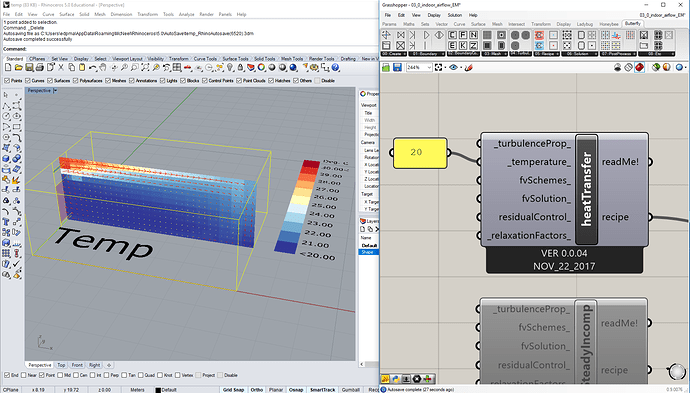Hi all,
I’ve been working with Butterfly for a little bit for the first time and I have a clarification question I was hoping someone could help me with?
My intent with this model was to be able to look at an internal air temperature stratification simulation with the effect of downdraft due to a cold window surface influencing the result. I have one air input (supply air register with 30°C / 1.0 m/s air) coming into the space and an ‘open door’ at the rear wall for air exit/outflow with pressure set to 0. I was (I think) able to set up the model correctly and it all seems to be working ok so far.
My question is in regards to the 'heatTransfer’ solver and in particular the ‘temperature’ variable input. I see in the component notes that this is set to 300k by default, but the space I am trying to model is supposed to have an interior set point of 20°C interior air (293.15 K) with 22°C wall/floor/ceiling surfaces, so I am wondering if this ‘temperature’ variable is the appropriate place to input that default/starting air temp? I couldn’t quite understand from the reference materials:
OpenFoam.com/ExtendedCodeGuide
what this ‘T_ref’ variable is for? Though it is clear that it has a large effect on the output / results for the simulation.
Below is a quick view with the default (26.85 °C) input:
and then with 20 °C used as this ‘T_ref’ input (all other settings stay the same):
Just wondering about it and if I am understanding the setup here correctly and what this variable is supposed to be used for? Any thoughts / references or input are much appreciated!
oh, and just for reference in case it matters, this is using:
- Rhino V5 SR13 64-bit (5.13.60913.21340, 09/13/2016)
- Grasshopper 0.9.0076
- Butterfly Ver 0.0.04 / Component Nov 22, 2017
thanks for a great tool!
-Ed

